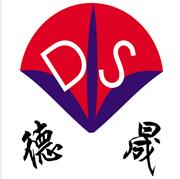Product Categories
- Enzyme(14)
- Carbomer(2)
- Blood collection tube additives(12)
- trinder's reagent(9)
- Biological buffer(21)
- Chemiluminescence reagent(9)
Contact Supplier
| Hubei xindesheng Material Technology Co., Ltd | |
|---|---|
| Country: | China |
| Tel: | +8618971041571 |
| E-mail: | zjing9632@gmail.com |
| QQ: | 2198447049 |
| Skype: | Chat Now! |
What are the materials required for the reaction of luminescent agent (Luminol)?
Release time: 2023-09-14
What are the materials required for the reaction of luminescent agent (Luminol)?
Luminol reaction, also known as chemiluminescence reaction, is a unique chemical phenomenon that can emit visible blue light under specific conditions. It is commonly used in experimental teaching, scientific research, and tracer detection. Of course, this reaction sometimes requires some special reagents and strict experimental steps to achieve. Let's take a look at the materials and experimental steps required for the luminescent agent reaction.
1、 Required materials
(1) Concentrated ammonia water: Concentrated ammonia water, also known as ammonium hydroxide, is a key component in the reaction of luminescent agents. It provides alkaline conditions that promote the dissolution of the luminescent agent and participate in the reaction, noting that concentrated ammonia water is usually provided in the form of 25% or higher concentration.
(2) Refrigerant: This is the luminescent substrate of the reaction, which, as an organic compound, can react with hydrogen peroxide under alkaline conditions of ammonia water and produce light, usually in the form of powder.
(3) 10% sodium hypochlorite solution: Sodium hypochlorite is another key reagent that provides an oxidizing environment that promotes the reaction of luminescent agents with ammonium hydroxide and generates light. A 10% sodium hypochlorite solution indicates that it contains 10% sodium hypochlorite (measured by effective chlorine content).
(4) 30% hydrogen peroxide solution: Hydrogen peroxide is one of the reaction materials that promotes luminescence. Generally, a 30% hydrogen peroxide solution is a commonly used concentration.
2、 Experimental steps
(1) Prepare a mixed solution of alkaline refrigerant and hydrogen peroxide: Measure 420mL of water, then accurately weigh 0.05g of refrigerant using an electronic balance and add it to 420mL of water. Note that the luminescent agent may not dissolve easily. At this point, take another 20mL of concentrated ammonia water (ammonium hydroxide) and mix it with the water containing the cooling agent just now. It is observed that the cooling agent will gradually dissolve in an alkaline solution. Once completely dissolved, start adding 10-20 drops of 30% hydrogen peroxide solution to the solution. After mixing evenly, the required solution of the luminescent agent can be obtained, which we label as solution A.
(2) Prepare sodium hypochlorite solution: Take 20mL of 10% sodium hypochlorite solution (calculated based on effective chlorine content), and then measure 400mL of water. Mix the two evenly to obtain the required sodium hypochlorite solution, which we label as solution B.
(3) Mix solution A with solution B.
Refrigerant reaction is a common type of luminescent reaction. Whether prepared or used, it is necessary to follow safe operating procedures and pay attention to the use of protective equipment, such as goggles and laboratory jackets. At the same time, it is important to choose Refrigerant products to avoid the use of counterfeit reagents.
As a manufacturer of luminescent agents (Luminol), Desheng not only has 10 years of research and development experience, but also cooperates with professors from major universities to fully ensure the stability and sensitivity of the reagents' luminescence. At present, there are not only Luminol but also various luminescent reagents for sale, such as acridine ester. If you are interested, please feel free to contact us to purchase!

